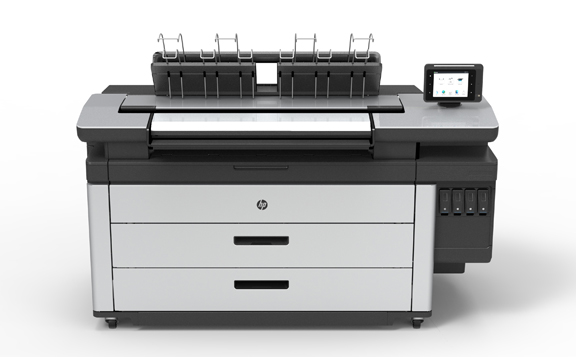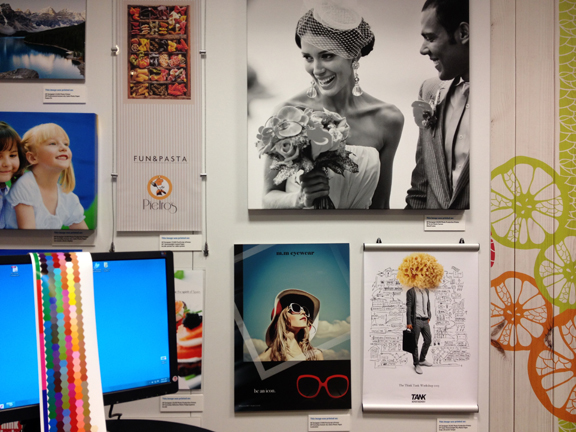June 18, 2014
As enterprise customers start thinking about contract renewals, hardware leases, and IT costs, HP wants them to keep something in mind—color. In a yet-to-be-named product series that HP plans to launch in the second half of 2015, the company will deliver wide-format Inkjet printers with PageWide technology, capable of both monochrome and color printing. The upcoming offering will “disrupt the $1.3 billion production printing market currently dominated by monochrome light-emitting diode (LED) printers,” according to HP.
Even though PageWide uses water-based pigment ink, the printed output is expected to be water-resistant. That, HP believes, will be an attractive feature for engineering and construction crews working onsite, in weather-exposed, leakage-prone environments. Since the nozzle operations and the print head movement mimic the scanning technology, integrated scanner will be an available option for customers who desire it. The software bundled with the system will offer accurate on-screen representation of print results based on materials chosen by users (such as types of paper) and more efficient PDF file management.
“Many of the customers we’re targeting engage in contracts and buying cycles that are three to seven years,” observed Alex Monino, HP’s worldwide marketing director for wide format printing business. “As they’re in year five or six, thinking of the next contract, we want to make sure they’re aware [of PageWide].” According to Monino, PageWide products are “in the last phase of product development.”
HP writes that the PageWide printing system “consists of more than 200,000 nozzles on a stationary print bar and spans the width of the page, enables users to produce a variety of black-and-white and color applications, such as drawings, maps and posters.” HP sees the modular technology—which lets HP stack print heads in a variety of layouts to expand its capacity or print area—as a scalable approach to offer new products in the near future. “With this approach, we can put fewer rows [of print heads], or more rows, so we’ve made an investment in a technology that’s scalable,” said Monino.
Monino reasoned, “In the lower end of the [production printing market], it tends to be transaction sales. Customers buy the equipment. In the higher end, which is the market we want to attack, it tends to be contractual relationship. They buy or lease the equipment, along with service contracts.”
HP has its eyes on the reprographics market, specifically the retail point-of-sale posters market. In HP’s vision, retailers like Target or Wal-Mart might acquire PageWide printing equipments to meet the demands of its regional retail outlets to produce promotional materials and posters. In a scenario that would be more profitable for HP, such a retailer may keep a printer at each of its regional facility, not just at the headquarter. Similarly, a beverage and drink distributor might use such a system to print collateral for bars.
HP is carefully watching the “X as a Service” trend. Consumer attitude is shifting from ownership to on-demand access. Consequently, everything from software and IT infrastructure to desktops is becoming on-demand, web-delivered services, yielding SaaS, IaaS, and DaaS products. HP thinks PageWide technology will let its resellers and partners offer more on-demand services. “Some dealers have the capability to deliver service; some don’t,” said Monino. “For the future, we’re looking for dealers who can provide end-to-end services.
Subscribe to our FREE magazine, FREE email newsletters or both!
About the Author
Kenneth Wong is Digital Engineering’s resident blogger and senior editor. Email him at [email protected] or share your thoughts on this article at digitaleng.news/facebook.
Follow DE







